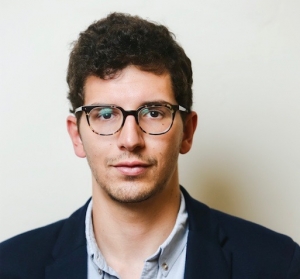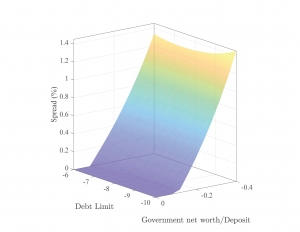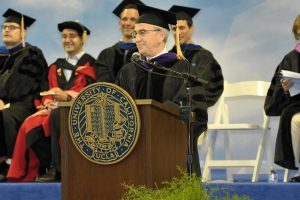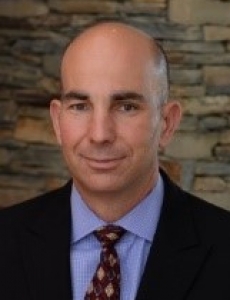
El Hadi Caoui
Technology standards play a central role in a broad array of industries: for example, AC in electric power distribution, FedACH for wire transfers in banking, USB for data transmission, MP3 for music distribution, and 4G LTE for mobile devices. What do these industries have in common? Network effects: the value of a given technology increases with the number of users. For instance, a bank’s incentive to adopt a particular electronic payment technology (say FedACH) increases with the number of other banks that already use the technology, because it can exchange payments with more institutions. Industries with network effects benefit from coordinating on a single technology (the ”standard”) to exploit network benefits.
However, in the medium to long-run, adopting a standard may have costs. Once bound together by the benefits of the standard, the industry may become reluctant to switch to better technologies as they become available. Can coordination on a standard prevent an industry from efficiently adopting new and better technologies? If so, what are the sources of this “excess inertia” in adoption? What instruments can a regulator use to break the stalemate and encourage the efficient adoption of new technologies? While the theoretical literature has long shown that excess inertia can arise, these questions have received little attention in the empirical literature.
In his job market paper, “Estimating the Costs of Standardization: Evidence from the Movie Industry,” UCLA PhD student, El Hadi Caoui, studies the movie industry’s switch from the 35mm film standard to digital cinema between 2005 and 2014. Digital cinema consists of distributing motion pictures to theaters over digital support (internet or hard drives) as opposed to the historical use of 35mm film reels. To screen digital movies, theaters must equip their screens with digital projectors instead of film projectors. Theaters and distributors achieve large cost-reductions with digital technology, but due to network effects under 35mm film, the conversion to digital may have been too slow.
To evaluate this claim, Hadi combines a dynamic model of the industry’s conversion to digital with detailed data on movie theaters’ adoption of digital projectors in France. Using the dynamic model, the paper simulates counterfactual scenarios and shows that industry profits over 2005-2014 are 18% lower due to “excess inertia.” Additionally, 62% of this loss is explained by coordination failure: if a firm is uncertain about other firms’ willingness to switch, it is unwilling to risk switching without being followed, which creates delays in the adoption of digital. Adoption externalities explain the rest of this loss (38%): a theater’s conversion to digital raises the availability of digital movies and benefits theaters that already use digital. This benefit to other adopters is, however, not accounted for by the theater making its decision.
The results suggest that policy intervention in network industries can be beneficial, in particular, to coordinate firms’ adoption of new technologies. Moreover, the most effective instrument—between adoption subsidies or standard-setting committees— depends on the relative importance of adoption externalities and coordination failure, which is likely industry-specific.
El Hadi Caoui is graduating from UCLA this summer, and will be joining the University of Toronto’s Rotman Business School as an Assistant Professor.
 We’d like to congratulate Assistant Professor Saki Bigio for being awarded a National Science Foundation (NSF) grant for his research titled “A Model of Credit, Money, Interest and Prices” (Joint with Professor Yuliy Sannikov from Stanford Business School).
We’d like to congratulate Assistant Professor Saki Bigio for being awarded a National Science Foundation (NSF) grant for his research titled “A Model of Credit, Money, Interest and Prices” (Joint with Professor Yuliy Sannikov from Stanford Business School).





